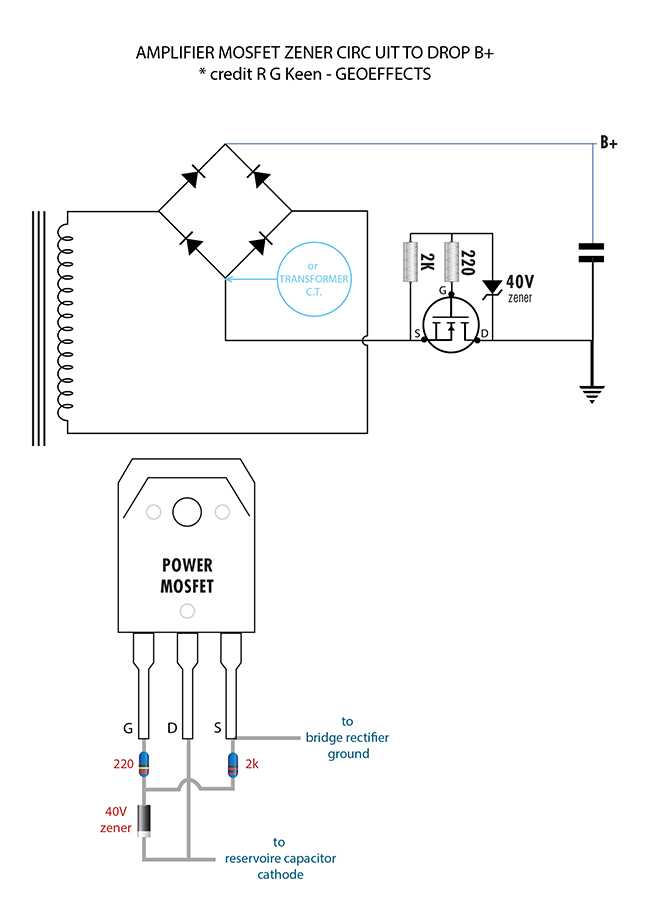Originally posted by Amp Kat
View Post
But you can use a zener to drop the B+ of a bridge rectifier circuit in much of the same way as you would for a 2-phase rectifier. I have a drawing of how to do this using a zener/mosfet combination which was adapted from R.G.'s mosfet follies. I'll track it down and post it....
(ho)

Comment